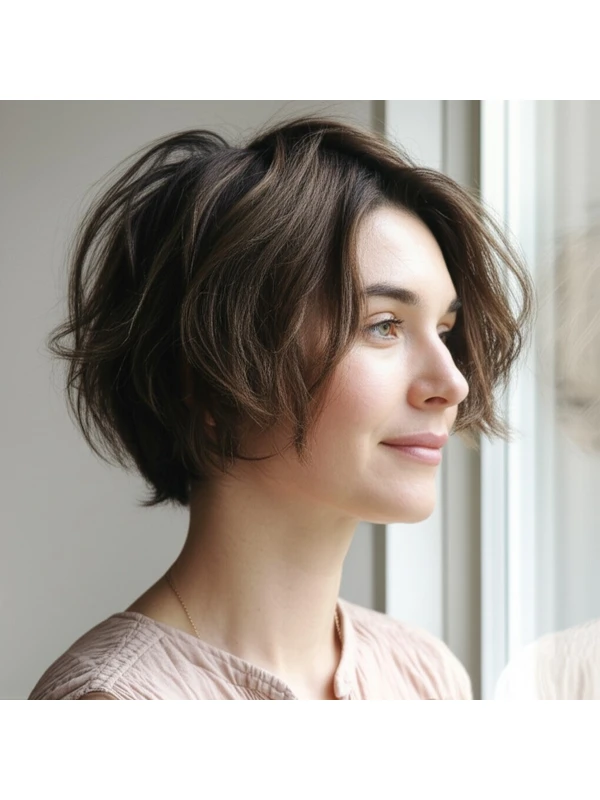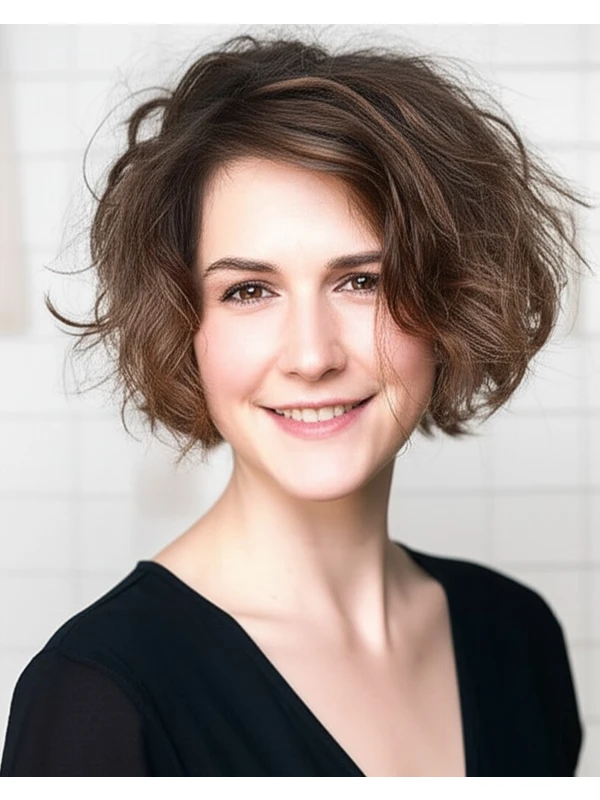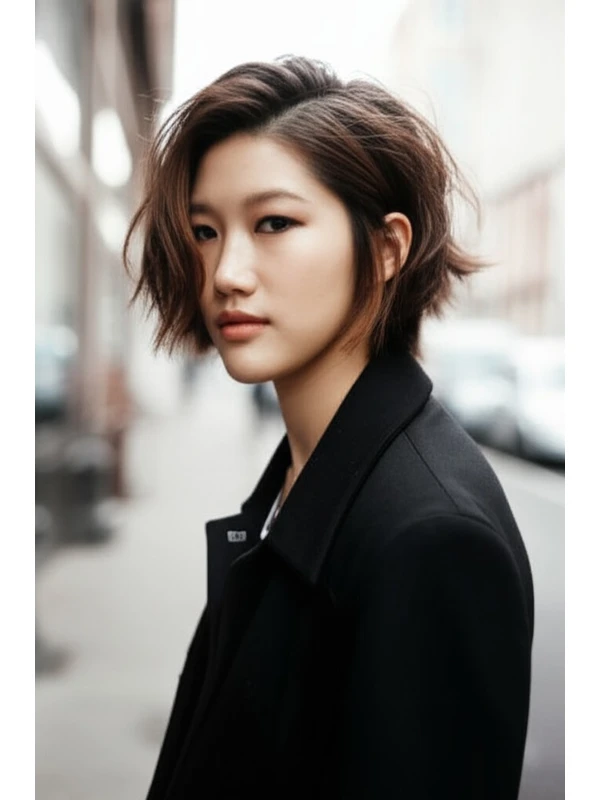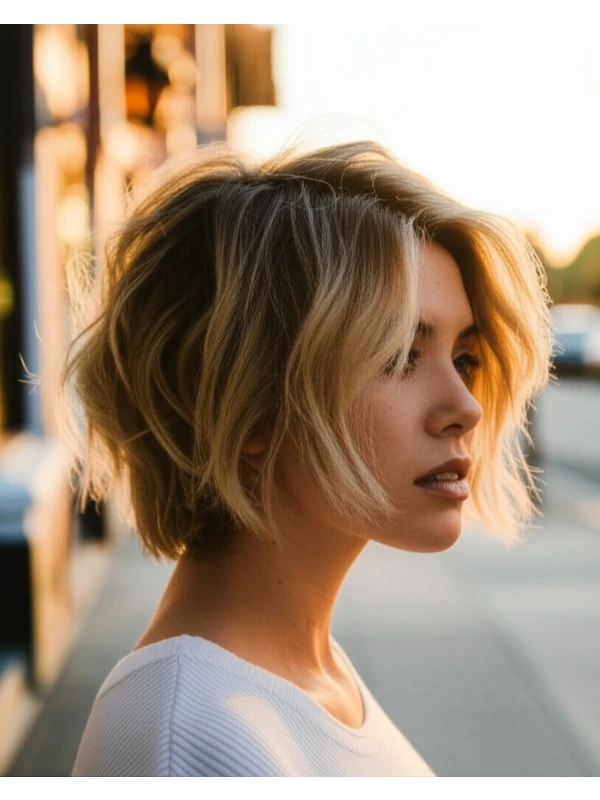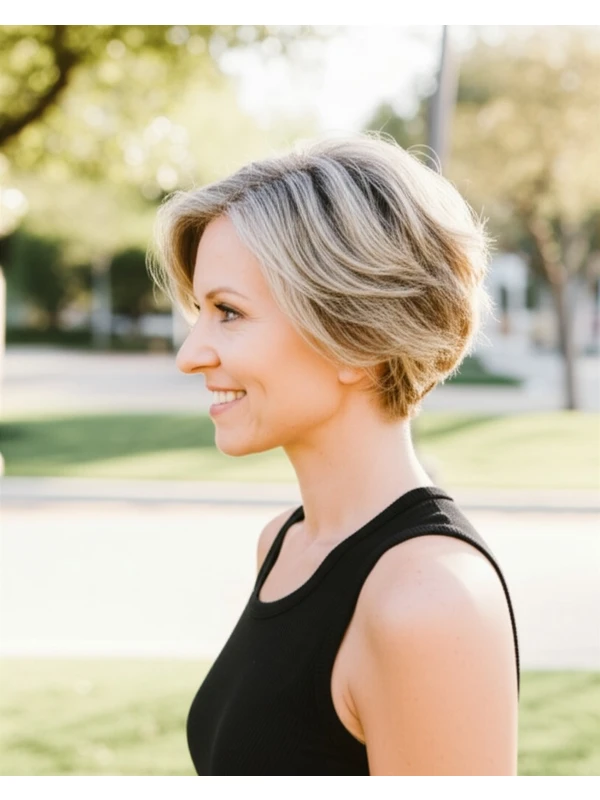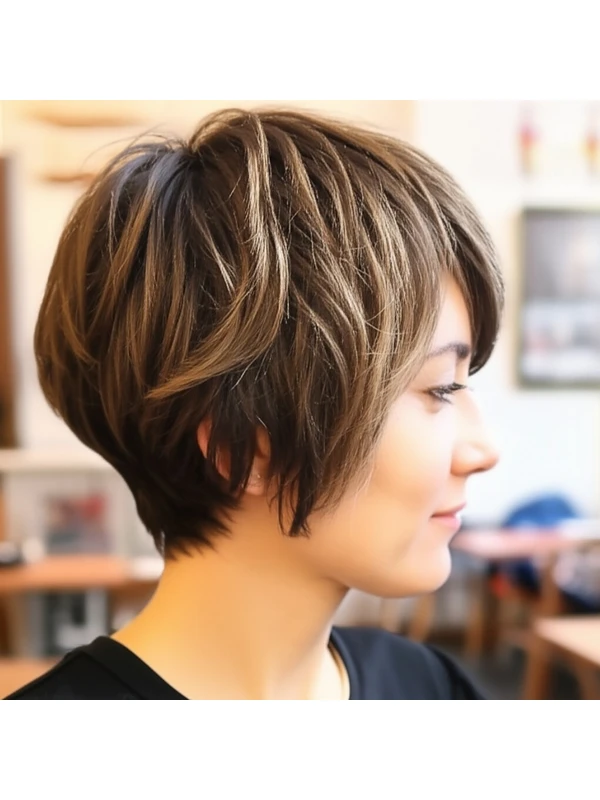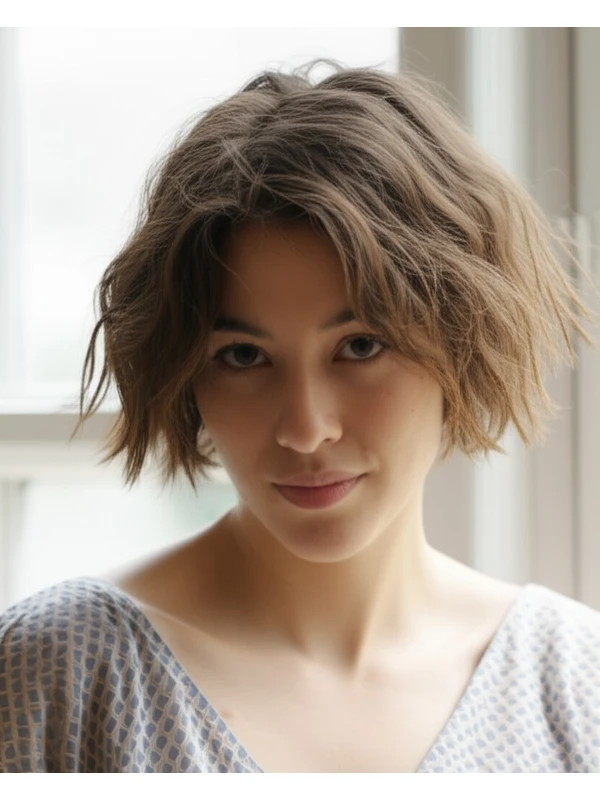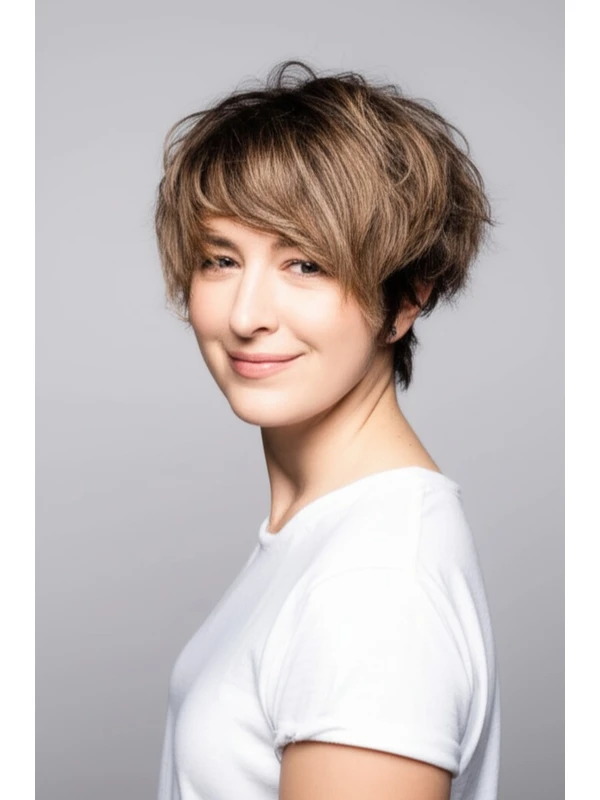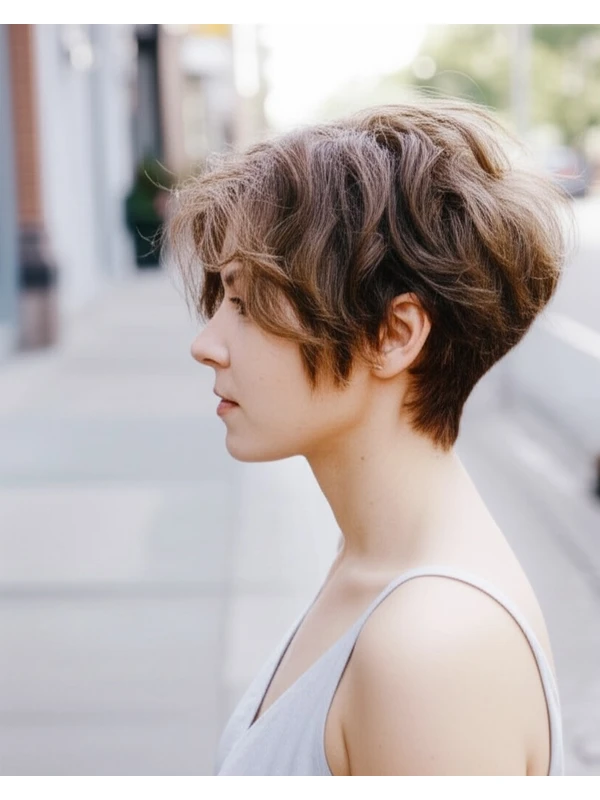#The Bixie: Your Guide to This Effortlessly Cool Hairstyle
The bixie is having a moment – and for good reason! It’s a fresh take on the pixie, offering more versatility and softness than its predecessor while still retaining that edgy vibe. If you're looking for something chic, low-maintenance (with some caveats!), and uniquely you, the bixie might be your next style. Let's dive into everything you need to know.
#1) Background & Definition: What is a Bixie?
The name "bixie" is a clever blend of “pixie” and “bob.” It’s essentially a short, textured haircut that sits somewhere between the two classic styles. Think pixie length in the back and nape, gradually lengthening to a bob-like shape around the front and sides.
Key Features:
- Layered Texture: This is essential. Layers create movement and volume, preventing it from looking too blunt or severe.
- Asymmetrical Elements: Often features slightly longer pieces framing the face, adding softness and personality.
- Softness Over Sharp Lines: Unlike a traditional pixie which can be very structured, the bixie is more relaxed and organic.
Typical Length Ranges: The nape of the neck might be short (1-2 inches), while the front lengths could reach chin to jawline length. It's all about that gradual transition!
Alternative Names: You might hear it called a “soft pixie bob,” or simply a "layered pixie."
#2) Face Shape Fit: Finding Your Bixie Sweet Spot
The beauty of the bixie is its adaptability, but certain features work better with different face shapes. Here's a breakdown:
- Oval: Lucky you! The bixie generally flatters oval faces beautifully. Experiment with fringe – a wispy curtain bang or even a blunt, brow-grazing style can look fantastic.
- Round: Add height and length to elongate your face. A side part is key, as it breaks up the roundness. Avoid very short bixies that emphasize width; opt for longer layers around the jawline. A textured fringe (not blunt) can also help slim.
- Square: Soften those angles! Layering is crucial to diffuse the sharpness of a square face. A side-swept fringe or soft, wispy bangs work wonders. Avoid blunt lines and very short cuts that accentuate angularity.
- Heart: Balance your wider forehead with layers around the cheekbones and jawline. A longer, sweeping fringe can soften the upper portion of your face.
- Diamond: The bixie’s angles can complement a diamond shape. Play with asymmetry to highlight your best features – perhaps slightly longer pieces framing one side of your face. A short, wispy fringe can also be flattering.
- Oblong (Long): Add width and avoid styles that emphasize length further. A fuller fringe or layers around the jawline will create a more balanced look. Shorter bixies work well here as they shorten the overall appearance of your face.
#3) Body Proportions & Height Guidance: Tailoring Your Bixie
The bixie isn’t just about your face; it needs to harmonize with your body proportions too!
- Petite: Shorter bixies (chin length or shorter) can help avoid overwhelming a smaller frame. Too much volume on top can look disproportionate.
- Average Height: Most bixie lengths work well for average heights. Focus on the face shape guidelines above.
- Tall: Longer, more layered versions of the bixie that graze the shoulders will balance your height and prevent you from looking too elongated.
- Narrow Shoulders: Add volume at the sides with layers to create a wider shoulder line. A side part also helps visually broaden the shoulders.
- Broad Shoulders: Avoid excessive volume on top, as it can exaggerate width. Keep the cut relatively sleek and close to the head.
- Long Neck: Shorter bixies that show more neck length can be very flattering.
#4) Works Best With Hair Types & Densities: Finding Your Bixie Match
The bixie is versatile, but certain hair types require a little extra consideration.
- Straight Hair: The bixie shines on straight hair! Layers will create beautiful movement and texture.
- Wavy Hair: Embrace those natural waves! A good stylist can cut the layers to enhance your wave pattern. Be mindful of frizz – a smoothing serum is key (see product checklist).
- Curly/Coily Hair: The bixie can work with curls and coils, but communication with your stylist is vital. Shorter lengths require careful layering to avoid bulkiness.
- Shrinkage Factor: Remember that curly and coily hair shrinks! Account for this when determining length – what looks like a short cut in the salon might be much longer once dry. A test curl can help gauge shrinkage.
- Fine Hair: Layers will add volume, but too many can make fine hair look even thinner. Ask your stylist to focus on strategic layering around the face and crown.
- Medium/Thick Hair: The bixie is ideal for medium to thick hair as it removes weight and creates shape.
- Density Tips: If you have very dense hair, ask your stylist about thinning shears to reduce bulk without sacrificing volume.
#5) Styling Variations: From Casual Cool to Evening Chic
The beauty of the bixie lies in its versatility!
- Sleek vs Textured: Use a smoothing serum for a sleek look or texturizing paste/wax for added definition and piece-y texture.
- Middle vs Side Part: A side part adds softness and asymmetry; a middle part can be more modern and edgy.
- Fringe Variations: Wispy bangs, blunt brow-grazing bangs, curtain bangs – the possibilities are endless!
- Occasion Styling:
- Casual: Air dry with a texturizing product for effortless cool.
- Office: Smooth and sleek with minimal texture.
- Evening: Add volume at the roots using mousse or volumizing spray, and finish with hairspray for hold.
#6) Maintenance: Keeping Your Bixie Looking Sharp
- Trim Cadence: Every 4-6 weeks to maintain shape.
- At-Home Routine: Gentle cleansing shampoo, hydrating conditioner (especially important if you have curly/coily hair).
- Heat vs Air Dry: Minimize heat styling whenever possible. When using heat, always use a protectant spray!
- Product Checklist:
- Shampoo & Conditioner: Tailored to your hair type.
- Leave-in Conditioner (especially for curls/coils).
- Texturizing Paste or Wax (for texture) / Smoothing Serum (for sleekness).
- Hairspray (light hold).
- Estimated Daily Styling Time: 5-15 minutes, depending on your styling preferences.
#7) Grow-Out Roadmap: The Bixie Evolution
- Months 1-3: The initial shape is most defined. Regular trims are essential to maintain the bixie's characteristic layers and asymmetry.
- Months 3-6: As it grows, the front pieces will lengthen. You can adjust your styling – perhaps pulling them back for a different look or embracing longer side bangs.
- Maintaining Shape: Between cuts, use texturizing products to enhance natural movement and prevent the style from looking blunt.
#8) Color Pairings: Enhancing Your Bixie's Dimension
- Cool Undertones (pink, blue): Icy blondes, silver tones, cool browns.
- Warm Undertones (yellow, gold): Honey blondes, caramel highlights, warm bronzes.
- Low-Commitment Options: Balayage or babylights to add subtle dimension without a drastic color change.
#9) Season & Occasion Guide: Styling for Every Moment
- Spring/Summer: Embrace lighter textures and brighter colors. Air dry with sea salt spray for beachy waves.
- Fall/Winter: Add warmth with richer tones (caramel, copper). A sleeked-back style is perfect for a more polished look.
- Work: Keep it professional – smooth and controlled.
- Weddings/Parties: Playful styling! Consider adding braids or decorative accessories.
#10) Cost & Time: What to Expect at the Salon
- Salon Time: Typically 45-90 minutes, depending on complexity and stylist expertise.
- Estimated Price Range: Expect a slightly higher price than a basic trim – think in the mid-range for salon services.
#11) Pros & Cons: Weighing Your Options
Pros:
- Versatile styling options.
- Can be flattering on many face shapes.
- Looks effortlessly cool and modern.
Cons:
- Requires regular trims to maintain shape.
- Styling can take longer than a low-maintenance style (depending on your desired look).
- May not suit very long hair lovers.
#12) Salon Consultation Script: Questions to Ask Your Stylist
Here are some prompts for your consultation:
- "I'm interested in a bixie cut. Can you show me examples of different variations?"
- “What length would best complement my face shape and features?”
- “How will the layers work with my hair texture (wavy/curly/coily)?”
- "Can we discuss styling options for both everyday wear and special occasions?"
- "I'm concerned about [specific issue, e.g., frizz or volume]. How can we address that with this cut?"
